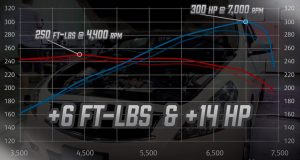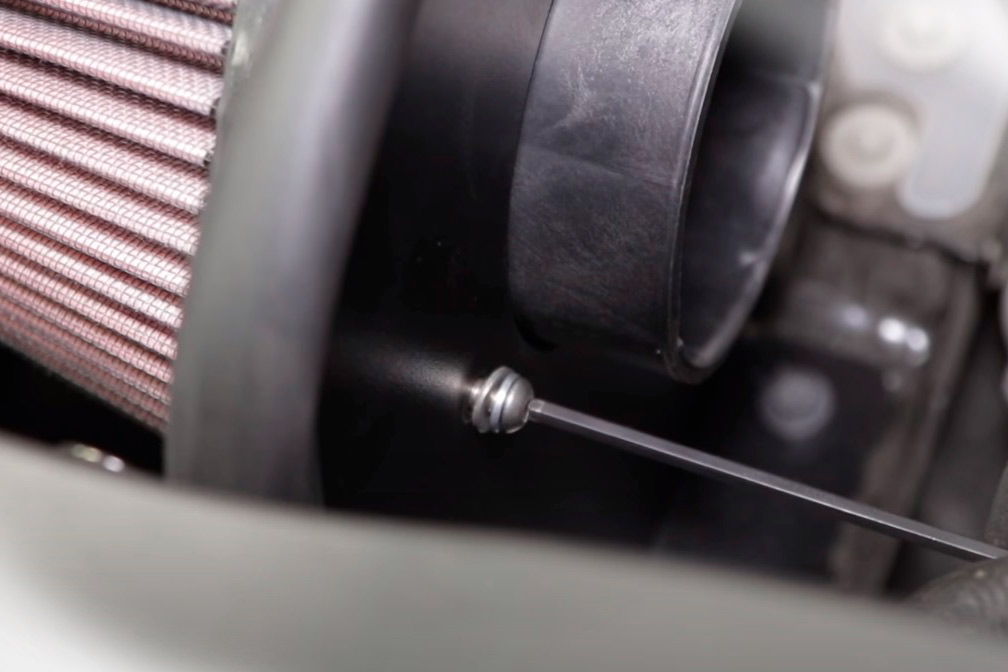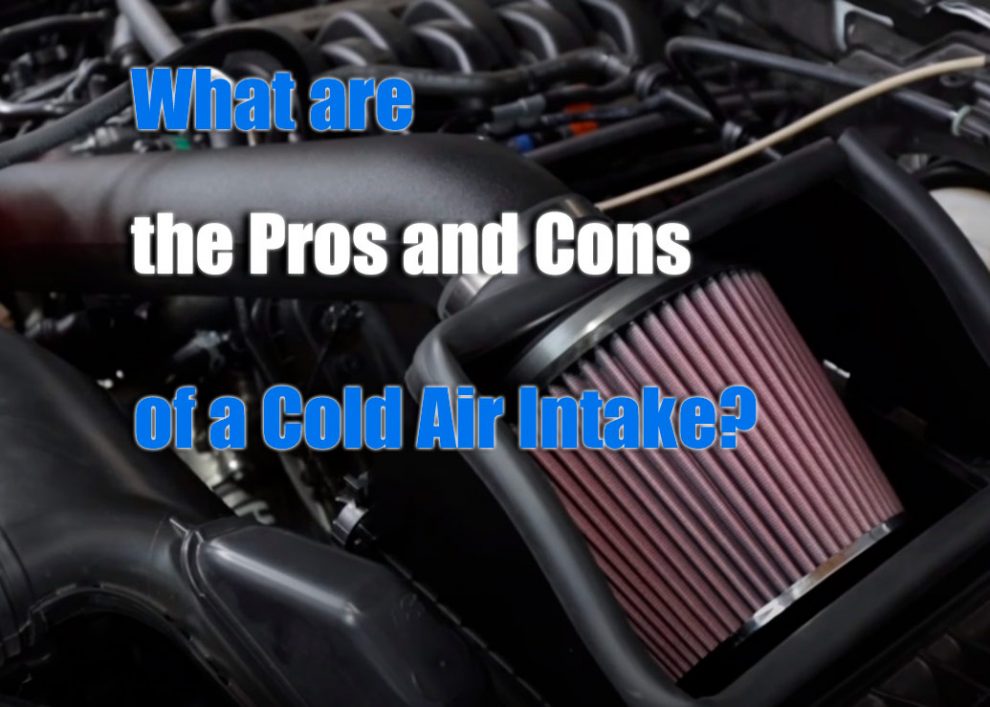If you live in a hot climate area and constantly push the powertrain to the limit, a cold air intake will be right up your alley. Specifically designed to improve the airflow, it will make sure the engine doesn’t overheat. This is only one of its pros, by the way. With the right air kit, you’ll also get an increase in HP/torque, acceleration, and a mileage boost.
That’s right: the Best Cold Air Intake can introduce quite a lot of benefits. And what about the downsides – are there any? Well, yes, no CAI is perfect. Trouble with the installation and steep price tags are some of the biggest cons. So, let’s learn about it all in detail. The more you know, the easier it will be to make the right choice
The Pros of Aftermarket Air Intake Systems
Third-party cold intakes offer one of the best price-quality ratios on the market. As long as you get the right fit, it will, most likely, be money well spent. And a quick note before we start: there are no 360-degree perfect air intake systems out there. Some are great at boosting the HP, while others are strong in mileage. Keep that in mind when out shopping.
#1: Maximized Performance
 You won’t have to spend big bucks on a new header, exhaust system, or nitro pack to boost the vehicle’s performance. All you’ll have to do is install an aftermarket air kit. A premium Cold Air Intake Adds Horsepower and Torque, giving the powertrain a nice “kick”. How big of an increase will it provide, though? For most vehicles, 10-30HP is what you can expect.
You won’t have to spend big bucks on a new header, exhaust system, or nitro pack to boost the vehicle’s performance. All you’ll have to do is install an aftermarket air kit. A premium Cold Air Intake Adds Horsepower and Torque, giving the powertrain a nice “kick”. How big of an increase will it provide, though? For most vehicles, 10-30HP is what you can expect.
The rule of thumb here is: the stronger the engine, the more impressive the gains will be. Even if you buy the cheapest third-party air intake, the airflow will be dramatically improved. I’m talking about +25-33%. The finest intakes, in turn, are 50% more efficient in cooling down the motor. With the engine kept cool 24/7, it gets to work at full power, reaching its maximum potential.
#2: Improved Mileage
A boost in fuel economy is arguably the biggest pro of a new air intake kit. In the long run, it can save you a lot of money. If you’re an average US driver putting out 15K miles per year, a mileage-oriented cold air intake will save you $150-250 a year. Check the specs: if you see something like “guaranteed 10% or 2-3 MPG boost in fuel efficiency”, I’d say that CAI is worth the investment.
A quick note: some manufacturers focus exclusively on fuel economy and can provide an even bigger boost (up to 5 MPG). However, these usually cost a lot and aren’t very impressive in terms of HP, torque, or anything else.
#3: Stronger Acceleration
Folks in the market for a Quick Power & Acceleration Upgrade will be happy to learn that this is very well possible to achieve with an air intake system. By keeping the engine cool and filtrated, it does, indeed, maximize its throttle response, which results in an acceleration boost.
#4: Good Towing Performance
Along with extra “oomph”, and faster 0-to-60MPH, the vehicle’s towing/hauling capacity will be increased as well. I’m not saying it will suddenly be able to carry heavier stuff than it used to. The improvements will be in the engine’s behavior. It won’t struggle as much when climbing hills, overcoming rocky terrain, and pushing through mud while packed with heavy weights.
#5: Increased Lifespan
And let’s not forget that thanks to better airflow, the engine will last a lot longer. When constantly working to the limit and being at the risk of overheating, the motor will eventually give up and break down. With a pro-grade air intake, you’ll get to significantly increase its lifecycle.

#6: Reusable Filters
The factory filters are average at best and do a so-so job of protecting the engine bay from contaminants. Aftermarket filters, in contrast, are a lot more effective. Besides, if it’s a synthetic performance filter, you’ll be able to wash and reuse it fairly easily.
The Cons of Third-Party Cold Air Intakes
Alright, with the pros all figured out, I want you to take a quick look at the most significant downsides of aftermarket air intake systems. Once you learn the answer to the question – what problems can a cold air intake cause – it will be much easier to make an educated choice and get the best bang for your buck.
#1: Not Always Easy to Install
Now, most market-leading brands do their best to make the air intakes as user-friendly as possible. So, if you see “bolt-on, direct-fit installation”, that means you won’t have any issues with the replacement. However, it’s not always as easy. Why is that, though? Not all air kits are vehicle-specific: mostly, the engineers try to make them universal. That means they are compatible with a long list of different vehicles, models, and makes.
Thus, you can’t be 100% sure that a new air intake tube, housing, and filter will be a direct match with your car. Chances are, they won’t fit the factory mounting spots and you’ll have to drill new holes. Or, you might be forced to bend and/or trim the CAI to make it fit. A quick reminder: always check the package – make sure it includes all the necessary hardware!
#2: A Roaring Sound
As I mentioned earlier, the best air intakes provide up to 50% more airflow. That, in turn, makes the engine sound a lot louder. For the off-roading or racing fans, this is actually great news, as that extra “roaring” tone is what most of us are after. However, for the “daily” drivers, this is a con, because the aggressive sounds can be a bit disturbing. So, this one can be both a downside and an advantage, depending on your preferences.
#3: Not Particularly Cheap
If you’re on a tight budget, I wouldn’t recommend buying an air intake just yet. The reason: cheap units won’t do you any good, and you’ll end up wasting that money. Don’t worry: a low-priced cold air intake won’t damage the engine, make the car weaker, or Decrease Gas Mileage, But, it won’t introduce any big changes, either. This is actually a big con for some folks, because a decent-quality kit costs +/- $300.
#4: Hydro-lock
If you go for a cheaper intake, you might end up with a hydro lock. It’s when the new gear lets water into the cylinders, forcing the engine to stop. When not treated immediately, the water will fill up the air filter as well, causing you an even bigger headache. So, don’t go cheap!
#5: You Might Need a Tuner
 Sometimes, for an air intake to bring its top performance, you’ll have to use a tuner. AKA a programmer, it can recalibrate the car’s computer to better work with the new cold intake system. Now, while the combined effect will be pretty great, and you’ll get to maximize the engine’s power output, do keep in mind that tuners cost a lot.
Sometimes, for an air intake to bring its top performance, you’ll have to use a tuner. AKA a programmer, it can recalibrate the car’s computer to better work with the new cold intake system. Now, while the combined effect will be pretty great, and you’ll get to maximize the engine’s power output, do keep in mind that tuners cost a lot.
On average, you’ll have to pay 200-250 US dollars to get a decent unit. And, depending on the manufacturer/brand, you might not see any significant improvements with the air intake until you pair it up with a tuner.
#6: Messed Up Meters
Although not very common in 2021, this next con can still be an issue. The thing is – when you upgrade the CAI, the car’s built-in meters might not be able to adapt to the new system. As a result, the readings will be all wrong. That, in turn, will lead to a bad fuel-to-air ratio. Sometimes, this also compromises the idle, offsetting it a bit, especially when there’s an aftermarket header installed.


Add Comment